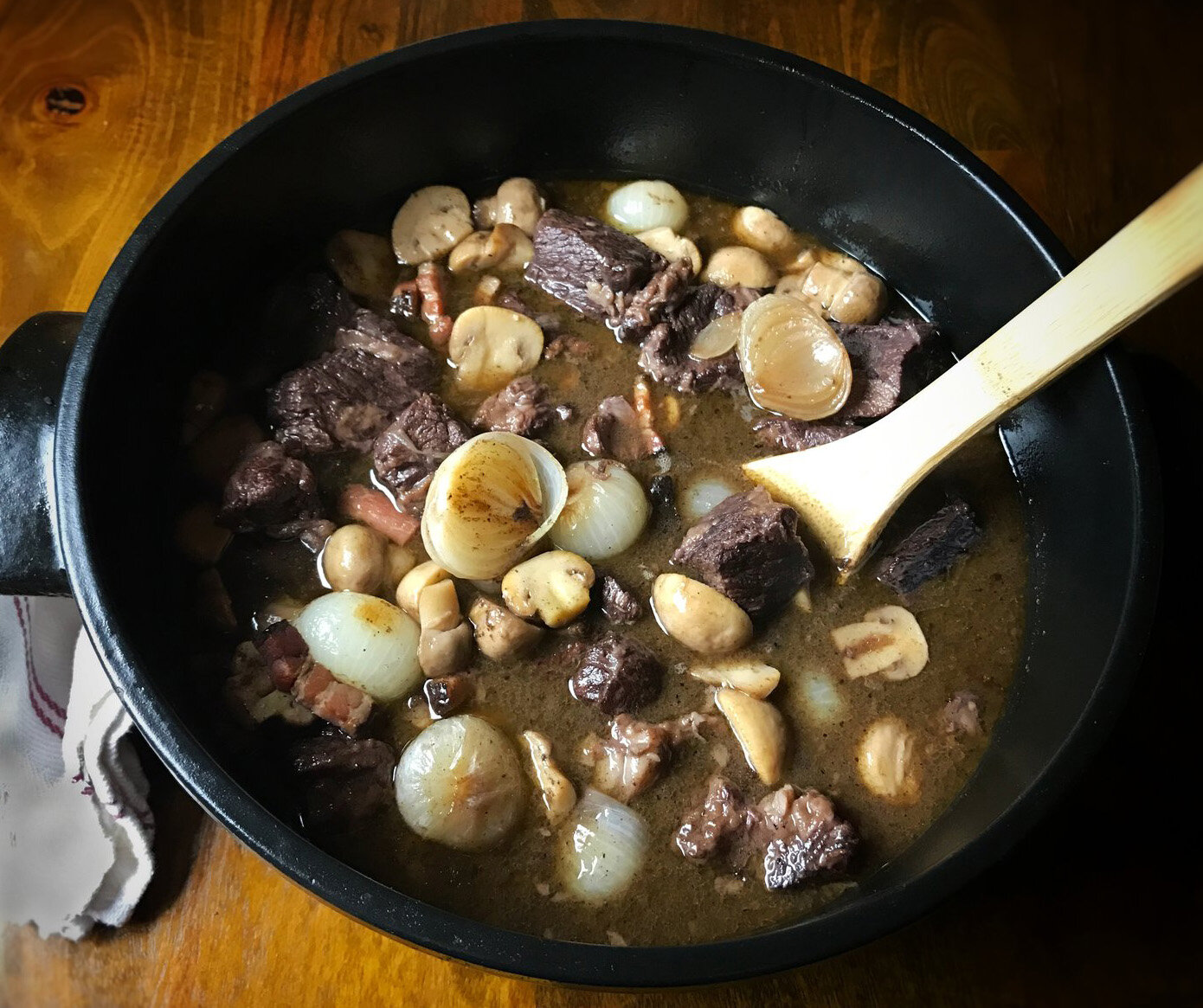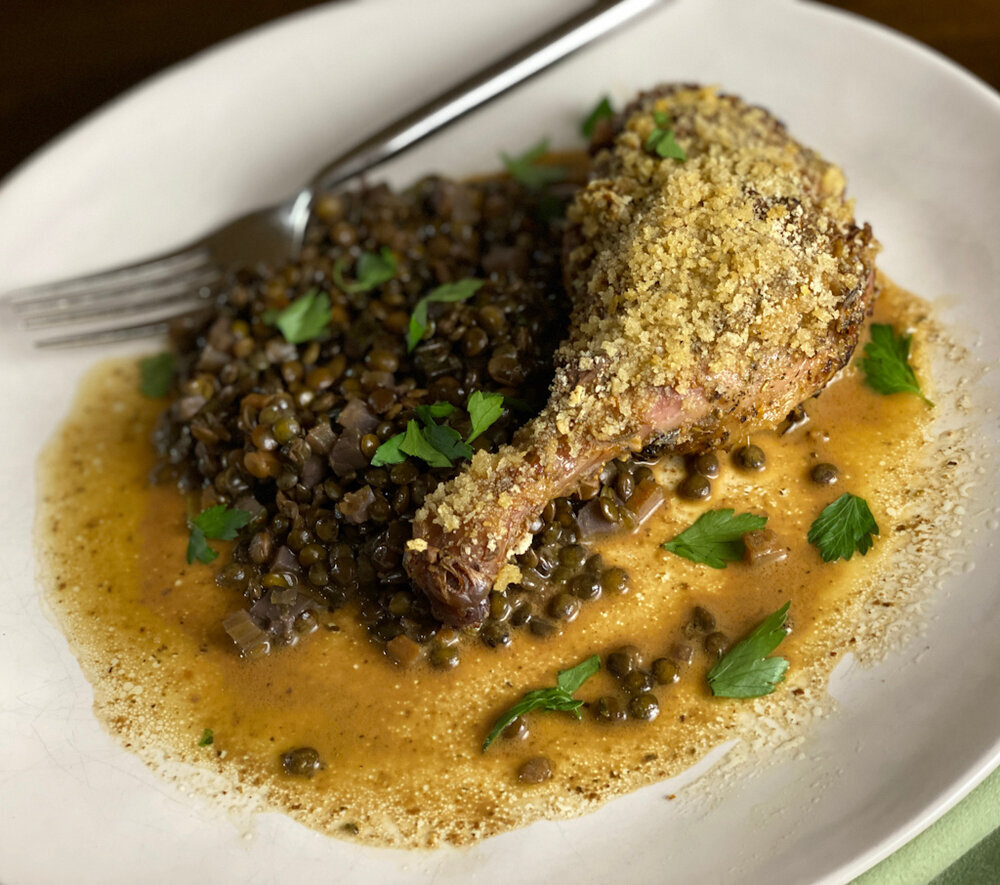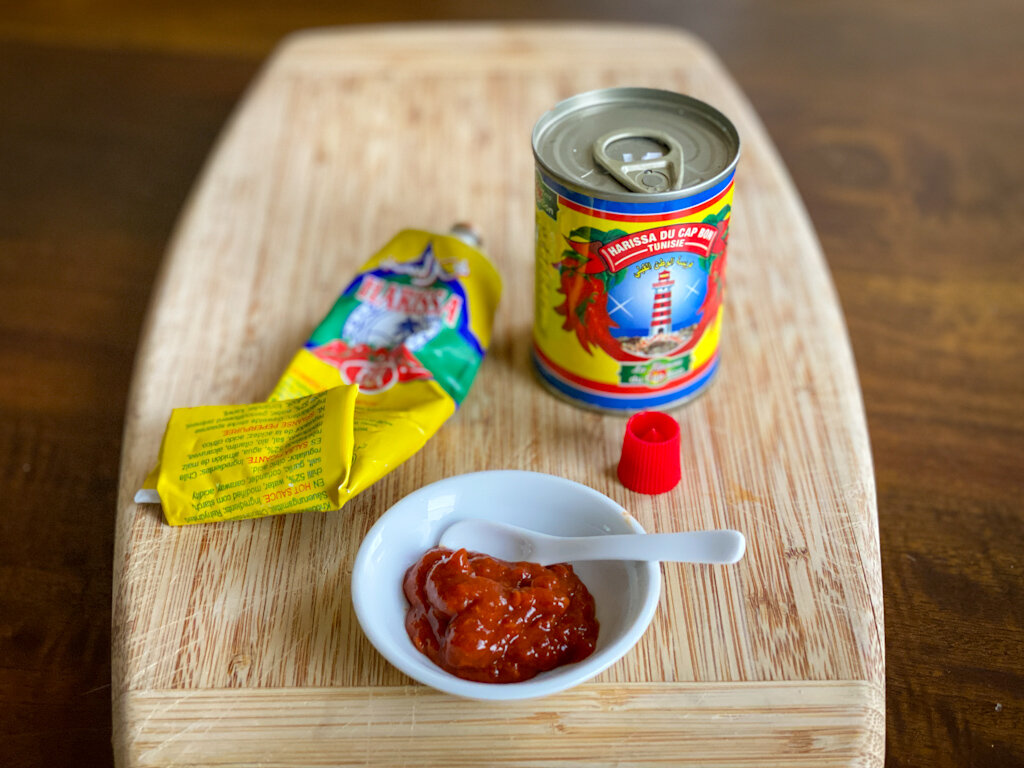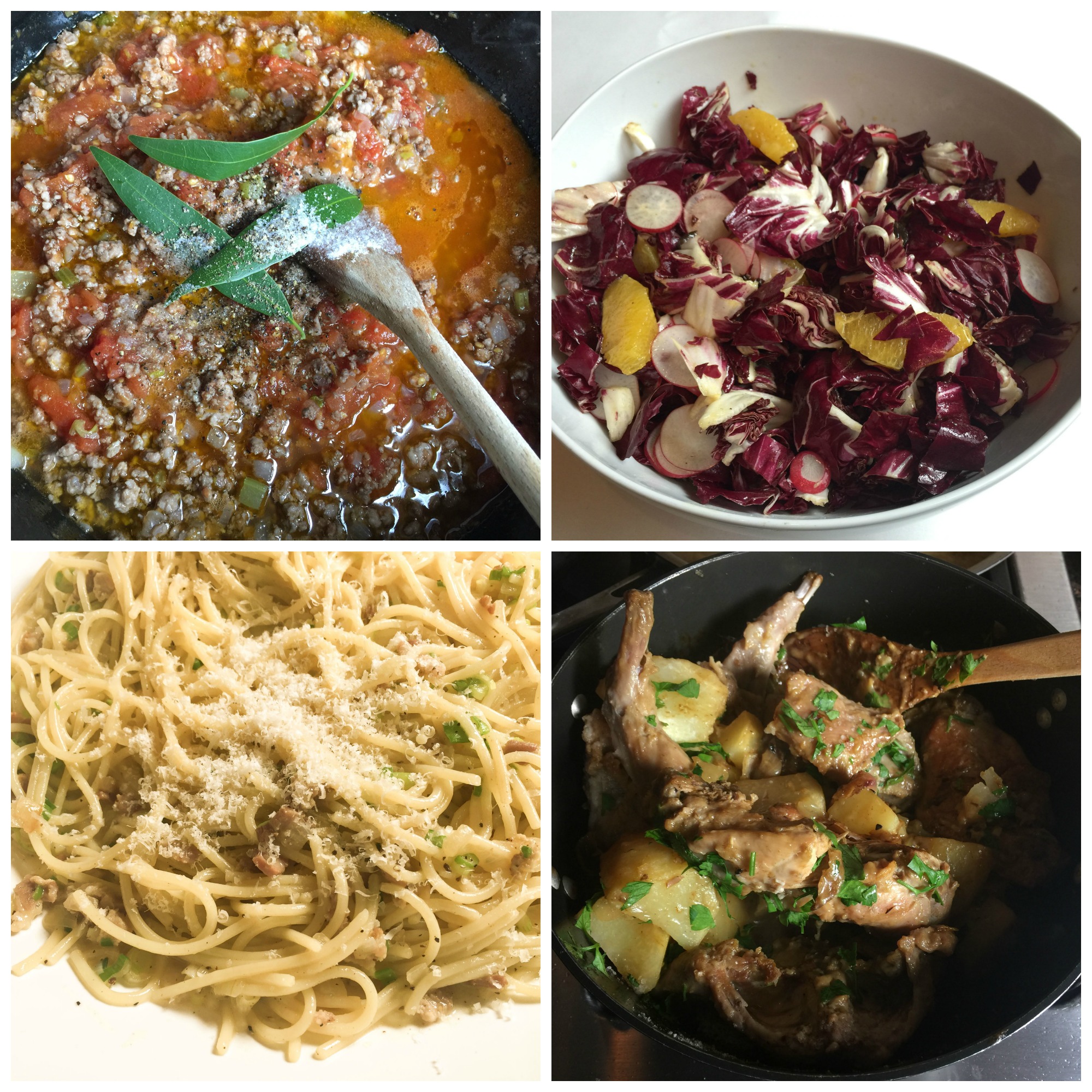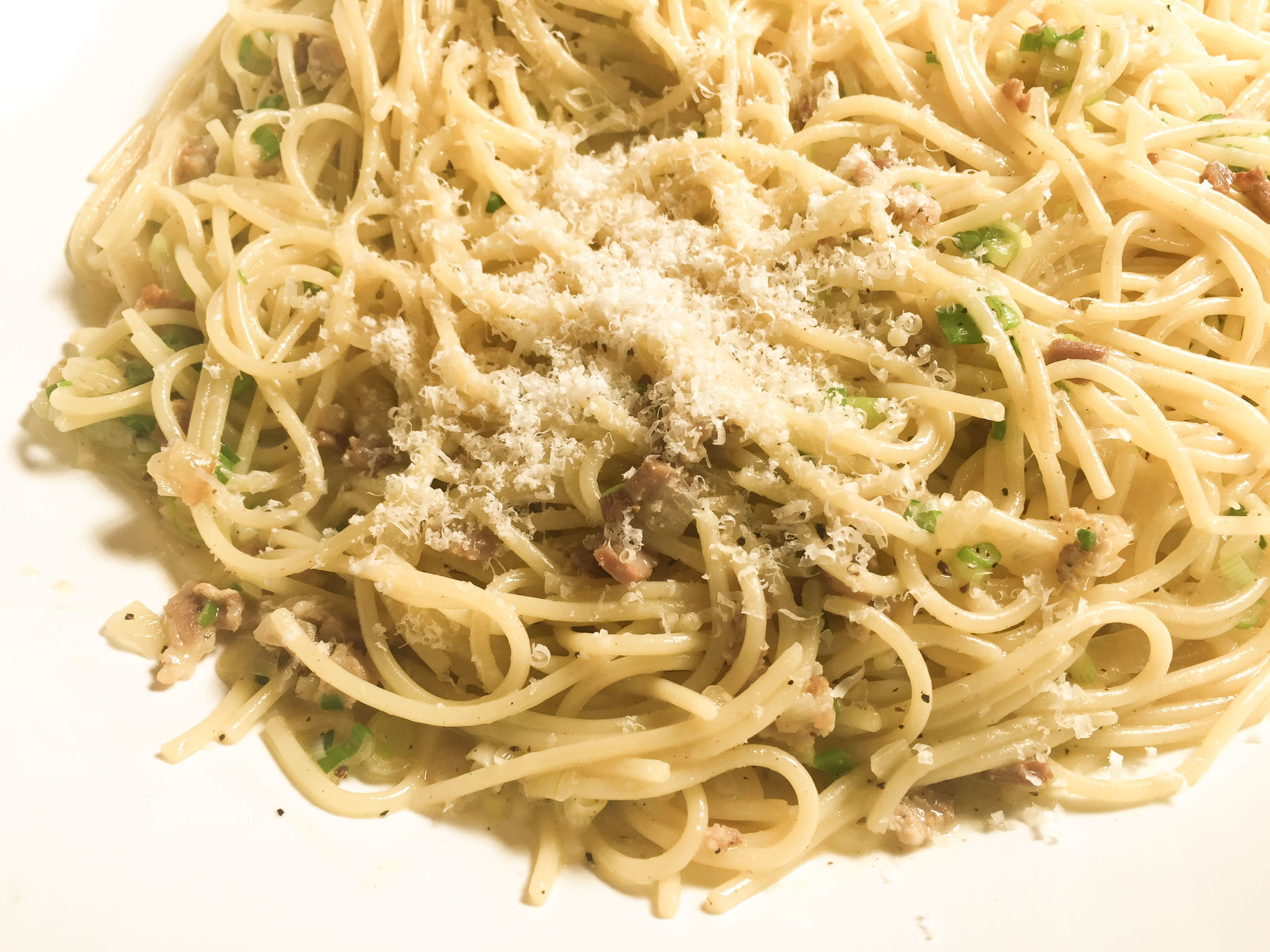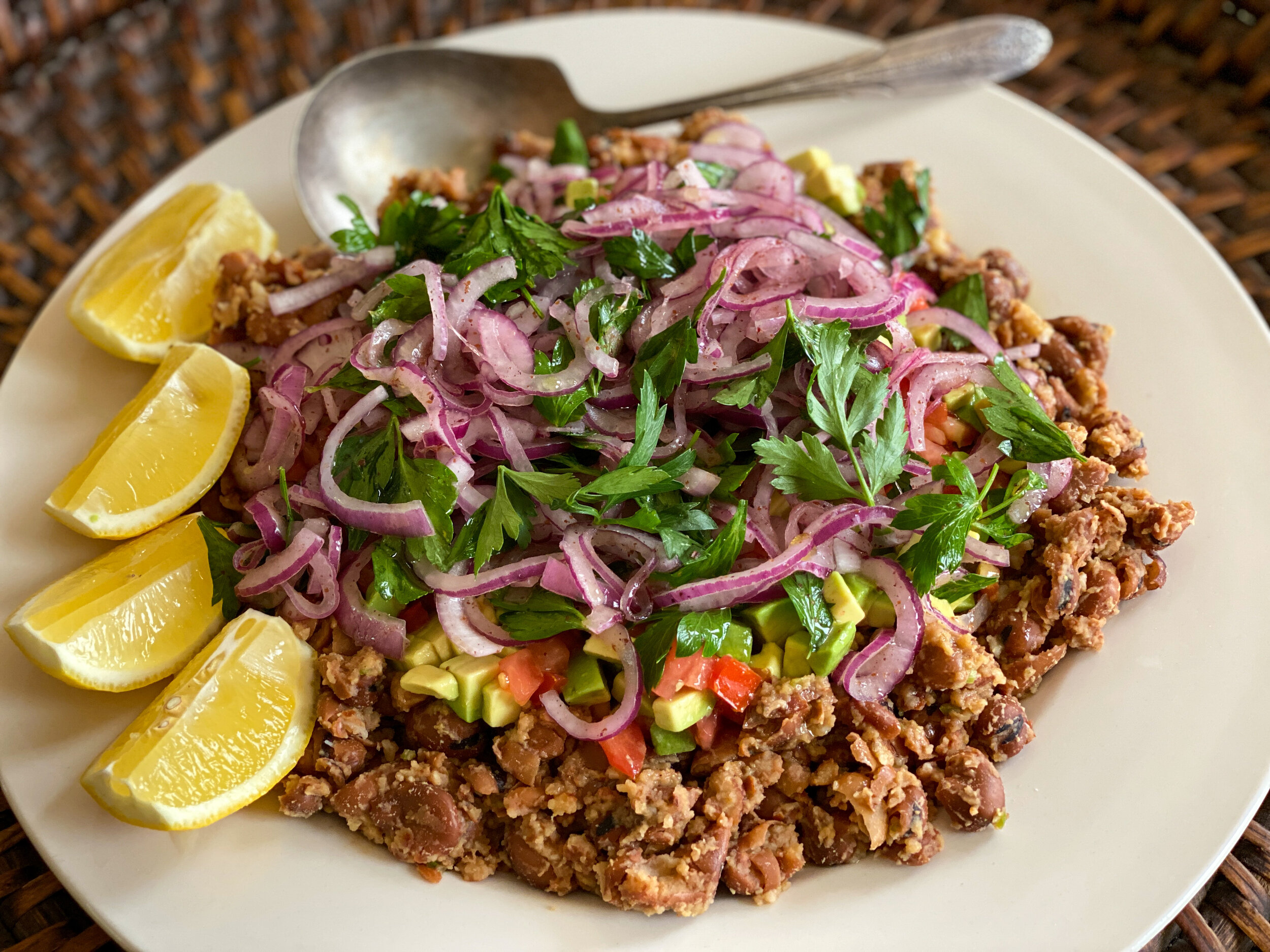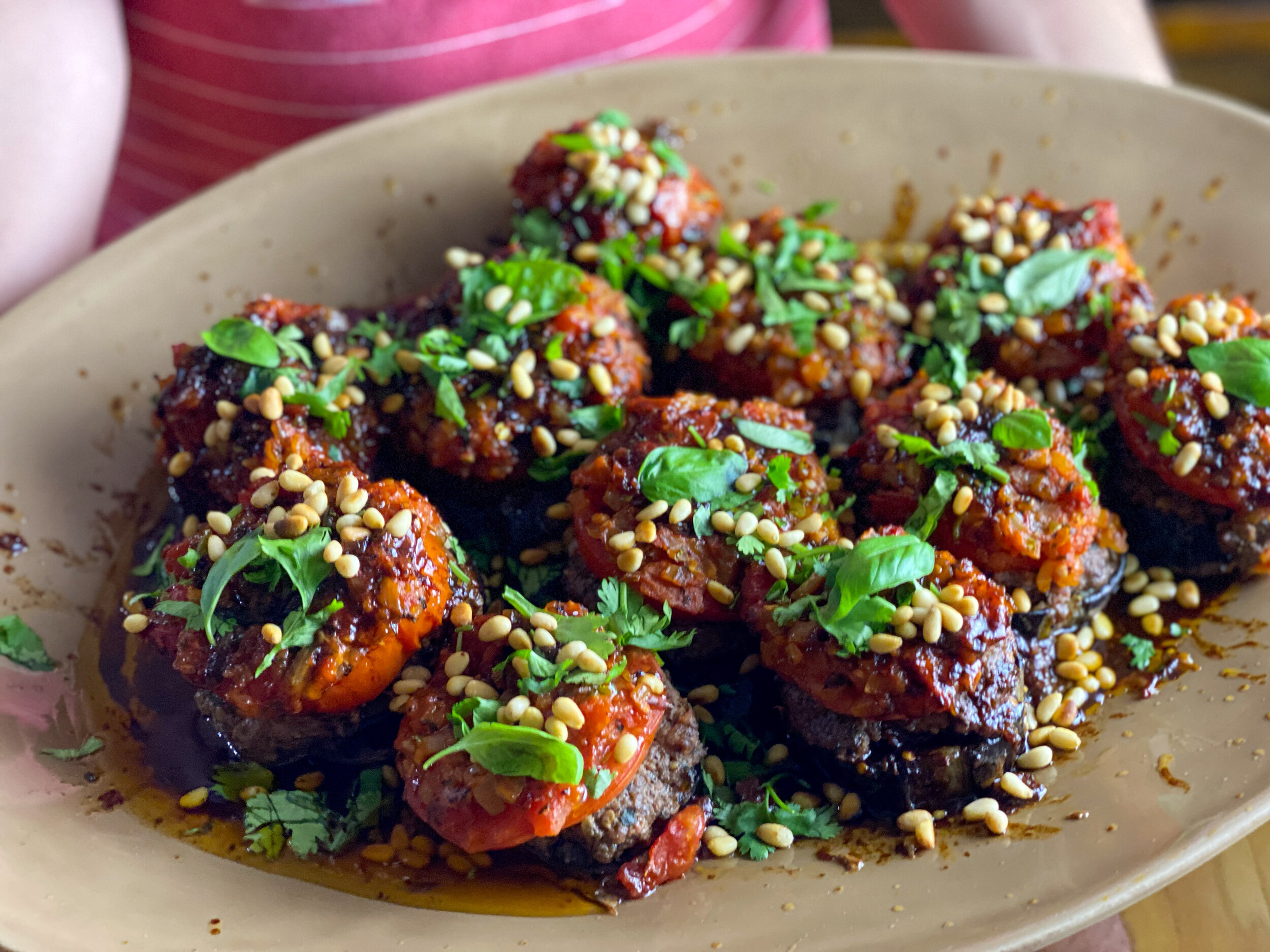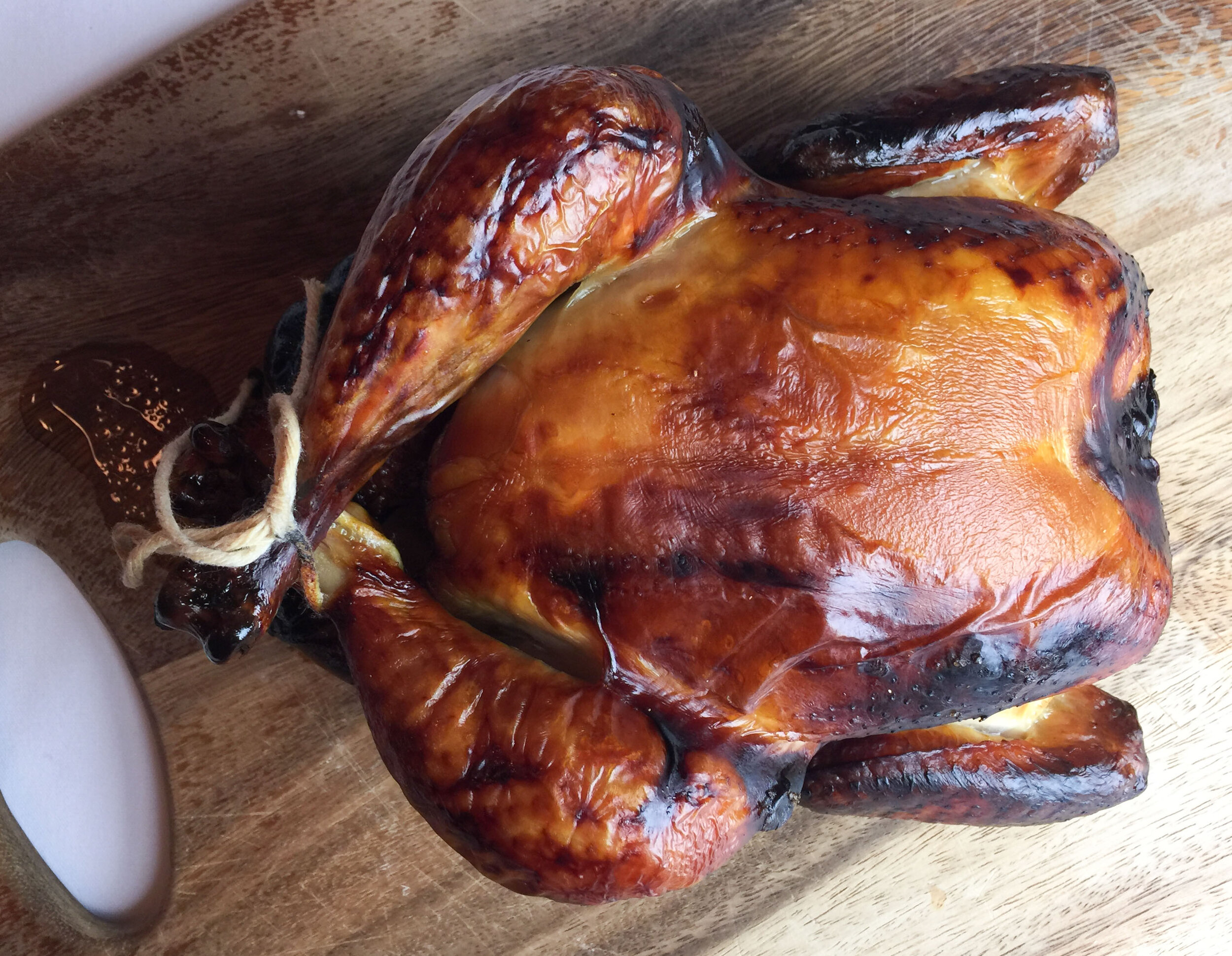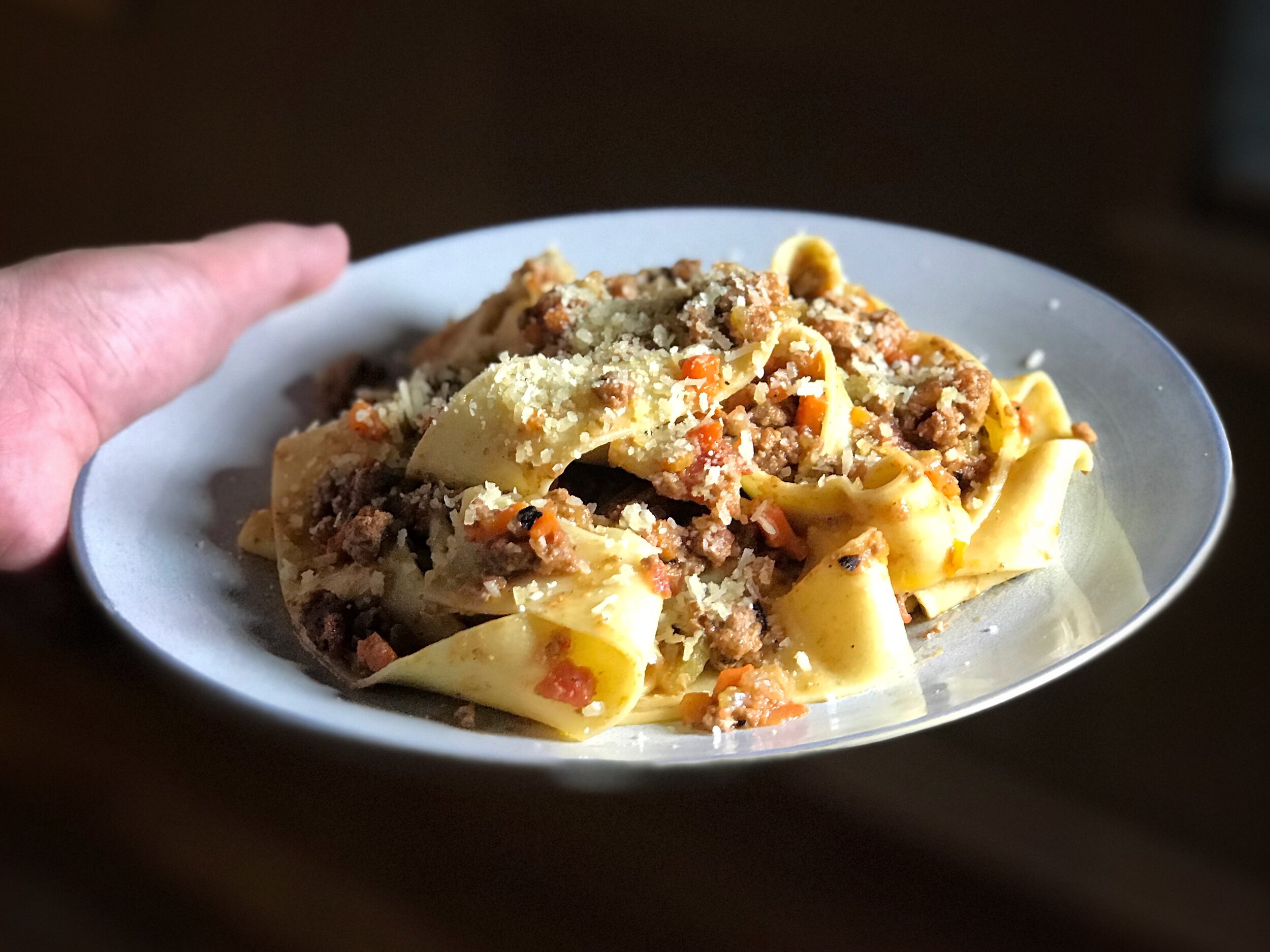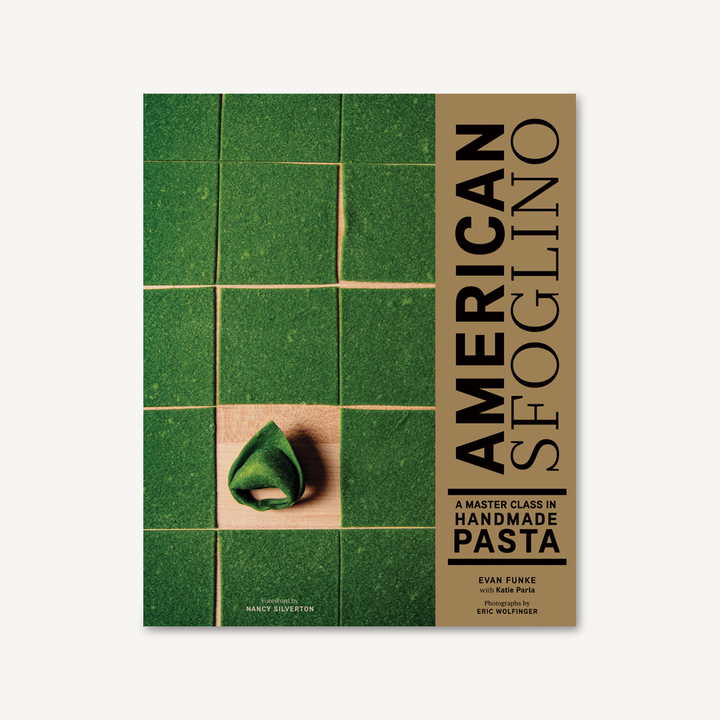We knew immediately what we had to do. We had to attempt the book’s two holy grails: sfloglia all’uovo (egg dough, for pasta) and ragù della Vecchia Scuola, the old-school meat sauce bolognese that, once you have procured all the ingredients and equipment, is a seven- or eight-hour project.
We blocked off not just a Saturday, but the whole weekend. For the ragù — which Funke learned at La Vecchia Scuola Bolognese in Italy (which is also where he learned to make pasta) — we had to purchase a meat grinder. (We bought an inexpensive cast-iron manual, hand-crank number.) I already had a food mill, suggested to make the passata di pomodoro (tomato sauce) that is another ingredient in the ragù. So a half-hour plus for that before you can even start the ragù.
The ragù recipe calls for grinding together beef chuck, pork shoulder, pancetta, prosciutto and mortadella — nearly four pounds in total. Plus five ounces of strutto, which is pork fat. It yields two and a half more quarts of sauce than you need for the recipe, which is a good thing, as the recipe is so time consuming.
Gathering the ingredients was its own adventure, and then the grinding, etc., followed by five to seven hours of cooking time. We had a grand time in the kitchen, Wylie and I.
The sauce was outrageously good, profoundly delicious. The transformation — after hours and hours and hours of simmering — was so striking, its depth extraordinary. At some point, it seemed like it all just melted together. It wasn’t ready, and then it was. Patience was an important ingredient.
It was also so rich that when we looked at what was left over in the fridge the next day, we were shocked by the white of all that strutto. Incredible that we had ingested that much fat. No wonder it was so good. Round two, the leftover ragù with dried pasta, was also profoundly delicious, but frankly, I wonder how long it’ll be before I’m moved to devote another weekend to making that sauce again.
As the ragù simmered that Sunday we made the pasta. I’ve owned a pasta machine — the old-fashioned, hand-cranked Atlas-type — since I was 19, and used it regularly for years, so the prospect of making dough and rolling and cutting pasta was not daunting. I’ve long understood that the dough requires a half-hour or 45-minute rest before rolling so the glutens relax, in order to get tender noodles.
With Funke, the only equipment requirements are a rolling pin, a knife and a scale; a bench scraper and a spray bottle of water are handy. You also need a very large board for rolling out the dough into an immense, round sfoglia.


